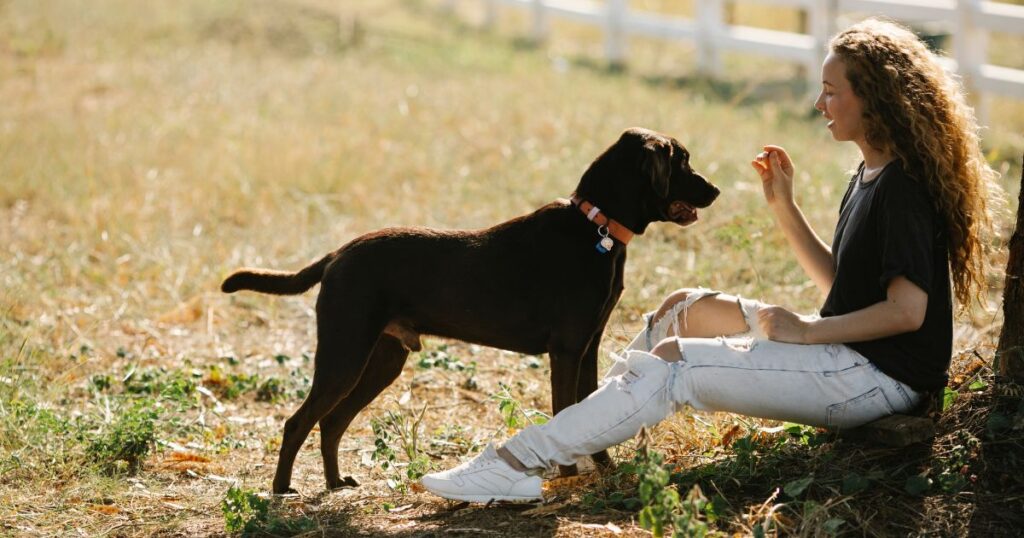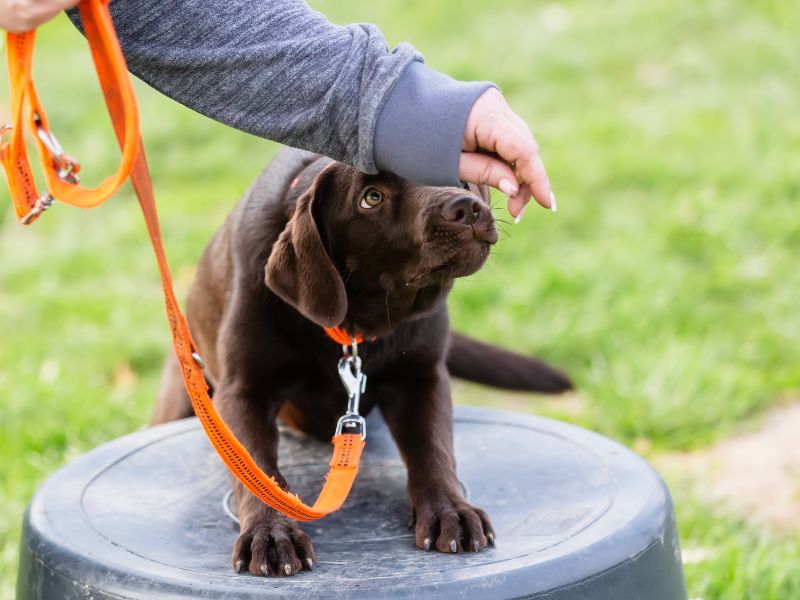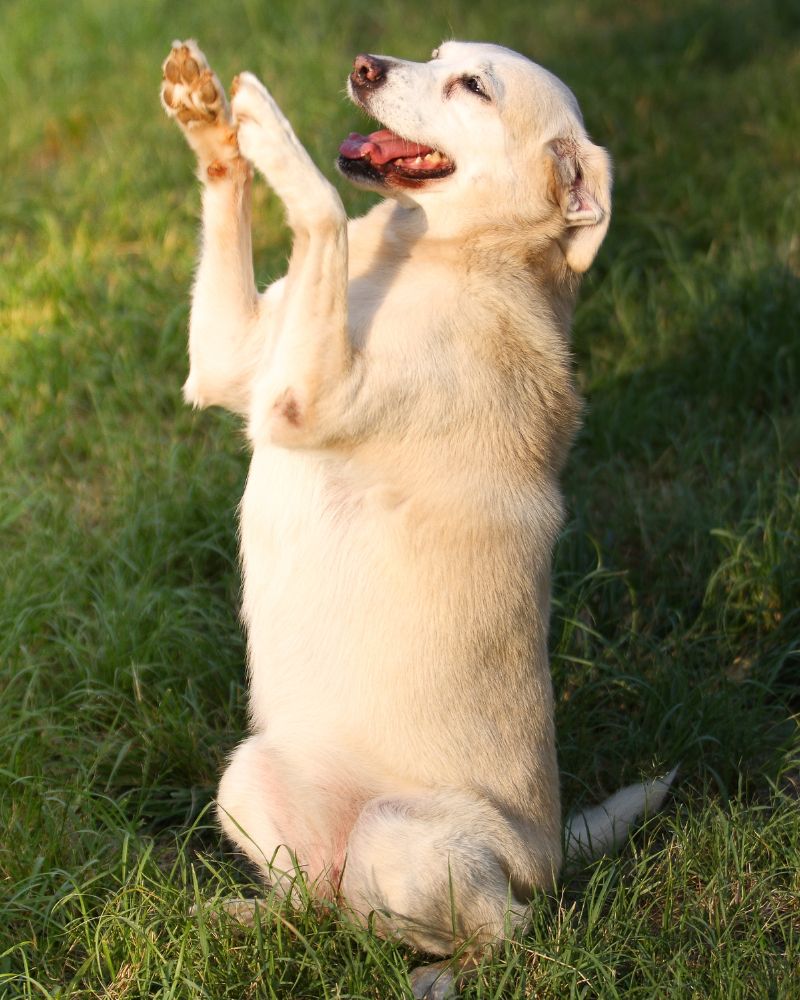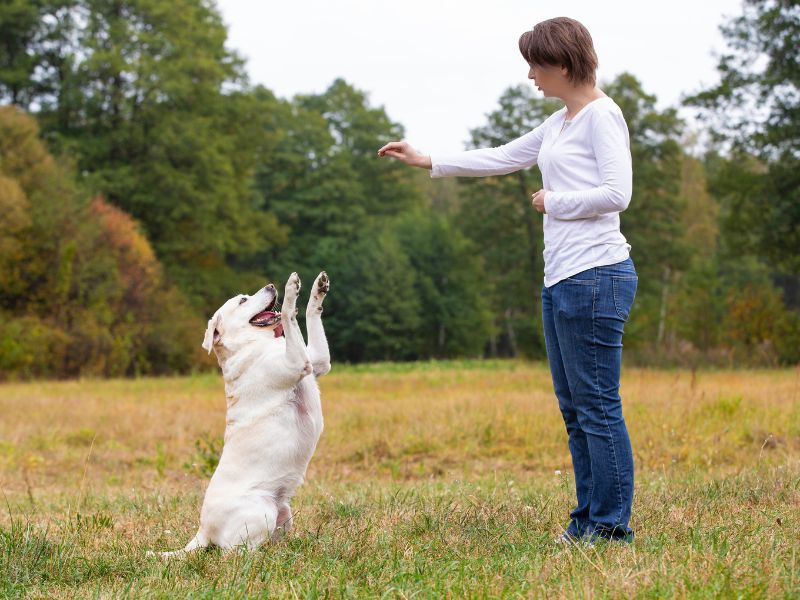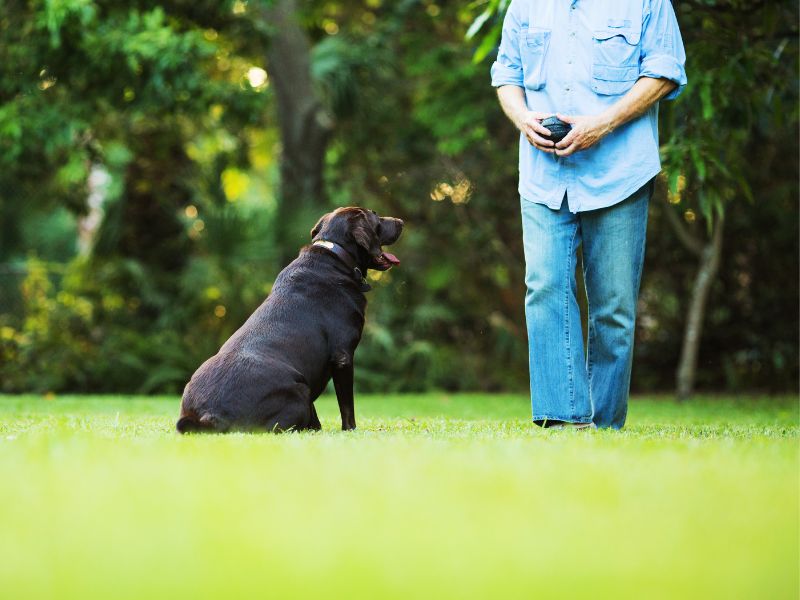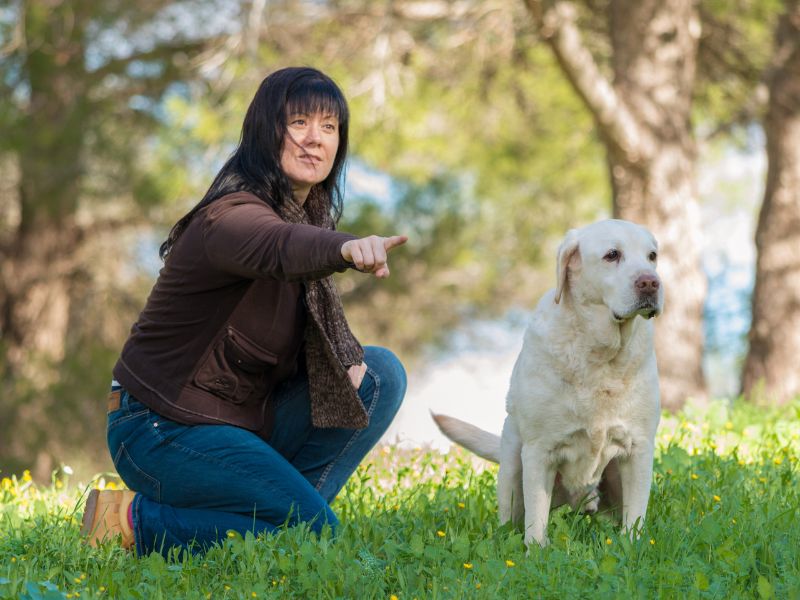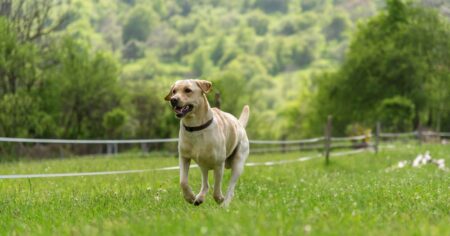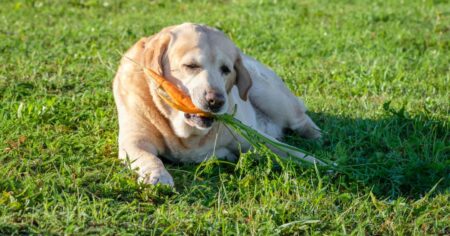Teaching a dog to take treats gently is an essential skill for both the pet and their owner. Many dogs tend to nip or bite when receiving treats due to overexcitement or a lack of bite inhibition. Yet, with proper training techniques, this behavior can be corrected, leading to a safer and more enjoyable experience for both parties.
One effective training method involves using a clicker and teaching a verbal cue, such as “gentle.” By consistently rewarding proper behavior and reinforcing the command, dogs gradually learn to take treats with gentle precision. Not only does this technique improve the owner-dog relationship, but it also promotes a better understanding of bite inhibition and impulse control in canines.
Training a dog to take treats gently requires patience and consistency, but the rewards are well worth the effort. Not only do these training techniques contribute to a stronger bond between dog and owner, but they also help prevent potential accidents and injuries that may result from overly enthusiastic treat-taking.
Does It Matter If Your Dog Snatches?
It is essential to teach your dog proper manners when taking treats. When a dog snatches treats roughly, it can be unintentionally harmful to the person offering the treat. This behavior is not a sign of aggression; it’s a lack of manners. Teaching your dog to take treats gently not only protects your fingers but also promotes a positive and respectful relationship between you and your dog.
A dog that takes treats gently is more enjoyable to be around and easier to handle during training sessions. It’s important to note that most dogs snatch treats out of excitement, so try not to interpret this behavior as malicious or ill-intended. By targeting this issue and working on it consistently, your dog can learn better treat-taking habits, and it will make your interactions much more pleasant.
Using various techniques, like holding the treat between your fingers so that your hand is flat, you can help your dog understand how to receive treats gently. If your dog has a more severe snatching problem, you might consider using a wooden spoon with soft food like cream cheese or peanut butter. This method keeps your fingers safe while your dog learns the correct way to get treats.
In conclusion, the dog owner or trainer should be patient and persistent when teaching a dog to take treats gently. Taking a friendly, non-aggressive tone will go a long way in making the dog more responsive to learning new habits. The bond between the dog and its owner will be stronger, resulting in a more enjoyable and safer pet-owner relationship.
Training With Food
Teaching a dog to take treats gently is essential for both the owner’s comfort and the dog’s safety. This behavior not only prevents injury to human hands but also promotes a positive environment for training and bonding with your pet.
Start by finding a quiet, calm environment to begin the training process. It’s essential to choose a time when your dog is relaxed and not overly excited or hungry. This can help ensure their focus and prevent them from becoming too rough when taking treats.
When presenting the treat, hold it between your thumb and index finger. Keep your fingers tucked in to avoid accidental nips. Offer the treat to your dog and use verbal cues, like “gentle” or “easy,” in a soft, calm tone. If the dog takes the treat gently, praise them with positive reinforcement, such as “good dog” or “nice job.”
If your dog still snatches the treat roughly or starts to use their teeth, withdraw your hand immediately and withhold the treat. You can try again after a few seconds, reinforcing the verbal cue and withholding the treat until your dog takes it gently. Consistency and patience are crucial during this process.
Another helpful technique is to present the treat in an open palm, making it difficult for your dog to grab the treat aggressively. This can teach them to lick or nuzzle the treat rather than biting it.
Remember to be patient with your dog during this process, as it may take some time for them to learn to take treats gently. Stay consistent with your verbal cues and positive reinforcement, and soon you’ll have a well-mannered dog who knows how to enjoy their treats with care.
Is It Possible To Stop A Dog From Snatching?
Yes, it is absolutely possible to teach a dog to take treats gently and put a stop to snatching behavior. A dog that mugs your hand every time you pick up a treat or swallows half your hand when you feed them can be trained to be more gentle with time and patience.
Training your dog to take treats gently involves building positive associations with the act of receiving a treat. Start by holding the treat in your hand and waiting for your dog to show polite interest without biting or snatching. When they approach gently, reward them with the treat. If they begin to snatch or bite, simply close your hand and try again until they approach with more restraint.
Another helpful method is to use a high-value treat like cheese or peanut butter on a wooden spoon. This allows your dog to lick the treat a few times before actually receiving it, which can help teach them the proper way to accept food. In addition, this method is a great way to protect your fingers from accidental nips until your dog has fully learned proper treat-taking manners.
Bear in mind that consistency is key when teaching your dog new behaviors. It’s important to practice this gentle treat-taking in various settings and during different training sessions to ensure your dog understands and internalizes the behavior. Be patient and encouraging, using a friendly tone of voice to praise and reward your dog as they gradually learn to take treats gently.
How To Teach A Dog To Take A Treat Gently
Step One: Closed Fist
Start by having a training treat in your closed fist. Allow the dog to sniff and investigate without opening your hand. When the dog stops pawing, nuzzling, or biting at your hand, praise them for their patience and gently give them the treat.
Step Two: Uncurling Your Fingers
Next, hold the treat between your thumb and the tips of your first two fingers while partially curling your fingers to protect them. Present the treat to the dog while saying a verbal cue like “gentle” to remind them to approach it softly. When the dog approaches gently, open your fingers to release the treat.
Step Three: Feeding The Dog
Once the dog consistently approaches the treat gently, have them work for the treat. This can include basic obedience commands or tricks they know. This will reinforce the gentle behavior and ensure that they’re treating your hand with respect during the feeding process.
Step Four: Say Please!
Teach your dog the “Say Please” cue – a simple prompt that teaches them to be polite, patient, and calm when waiting for their treat. To do this, before offering your dog the treat, say “please,” then give the treat when they gently approach for it. This will help your dog associate the cue with the desired behavior.
Step Five: Different Places
Practice offering the treat in various environments and situations. This ensures that your dog will maintain their polite manners regardless of where or when they’re given a treat. Consider practicing in your home, at a park, or during walks.
Step Six: Different People
Finally, have friends and family members practice giving the dog treats using the same steps as before. This will help familiarize the dog with taking treats gently from all types of people and strengthen their polite behavior overall. Keep in mind that some dogs may be more nervous with new people, so always reinforce their gentle behavior with praise.
Practice Makes Perfect
Teaching a dog to take treats gently can significantly improve your bonding experience with your furry friend. Consistent practice and patience are vital in achieving this goal.
First, remember that dogs may not initially understand the concept of being gentle when taking treats, as they are naturally inclined to use their teeth to explore the environment. The key is to reinforce the behavior you want by rewarding them.
Begin by offering a treat between your thumb and index finger, using a verbal cue such as “gentle” before you present it. When your dog takes the treat without pushing or biting your fingers, offer verbal praise and provide the treat. If your dog nips or is rough, avoid any harsh scolding or punishment. Instead, calmly withdraw the treat and try again.
To help your dog understand the concept faster, practice at varying speeds and angles during your training sessions. Make sure to maintain the same verbal cue to promote consistency. Additionally, using treats with a strong scent can encourage your dog’s focus and drive them to control their bite strength.
Another useful technique for teaching a gentle treat-taking behavior is clicker training. Using a clicker to mark the moment your dog behaves gently can greatly increase the efficiency of your training sessions. Clicker training links the sound of the click with the treat, hence positively reinforcing the desired behavior.
As you progress with your training, gradually decrease the size of your treats, which will require your dog to exercise more care while taking treats. This will teach them to gauge the size of the reward and respond accordingly.
Remember, friendliness and patience go a long way in helping your dog learn to take treats gently. Practice often, be open to adjusting your sessions, and soon enough, you will have a dog that takes treats with the utmost care and gentleness.
How Long Does It Take To Teach A Dog To Take A Treat Gently?
Teaching a dog to take treats gently is a process that varies from one dog to another. Some dogs may catch on quickly, while others might take a bit longer. Factors such as the dog’s breed, temperament, and previous experiences can all influence the time it takes for them to learn this essential skill.
To achieve the best results, it’s crucial to be patient, consistent, and apply positive reinforcement techniques. Start by offering the treat in a closed fist, or by providing a softer treat that encourages gentle nibbling. If the dog tries to grab or snatch the treat, simply tighten your grip or remove the treat momentarily. Once they display gentle fetching behavior, be sure to reward them with the treat and some praise.
As a general guideline, most dogs can learn to take treats gently within a few weeks of consistent training. Keep in mind that training sessions should be short but frequent, with no more than ten treats per session. It’s also essential to wait at least an hour between sessions and only practice when the dog is relaxed and not overly excited.
Introducing distractions or more complex environments can help your dog generalize the gentle-fetching behavior. Gradually increase the difficulty of the surrounding area, ensuring that your dog maintains their gentle treat-taking skills. Remember, consistency and repetition are crucial aspects of this training process.
In summary, it’s challenging to pin down an exact timeframe for teaching a dog to take treats gently. However, with persistence, a friendly tone, and a proper training approach, most dogs can acquire this skill within a few weeks.
What Could Go Wrong?
The Dog Hurts Your Hand?
When teaching a dog to take a treat gently, it’s essential to be cautious about potential outcomes. One possibility is that the dog might unintentionally hurt your hand during the process. This can occur due to the dog’s excitement or lack of bite inhibition. To prevent this from happening, ensure that you use a calm and friendly voice when instructing your dog. Additionally, providing a high-value treat in a flat palm rather than holding it with your fingers can help avoid any accidental nips.
The Dog Bites Your Fingers?
Another situation that could arise while training your dog to take treats gently is the dog accidentally biting your fingers. This is typically not done out of aggression, but rather as a result of the dog miscalculating the treat’s location. To reduce the chances of this happening, consider using techniques like clicker training or teaching a verbal cue such as “gentle.” Offering the treat on an extended, flat palm will also aid in minimizing the risk of bites to your fingers.
Remember to be patient and consistent in your training, as it may take some time for your dog to learn these new skills. By using a friendly tone and carefully considering how treats are presented, you can work together with your dog to ensure both your hands and their mouth stay safe throughout the learning process.

